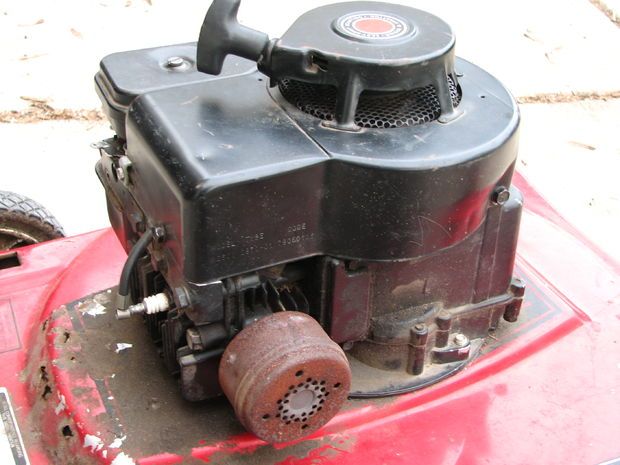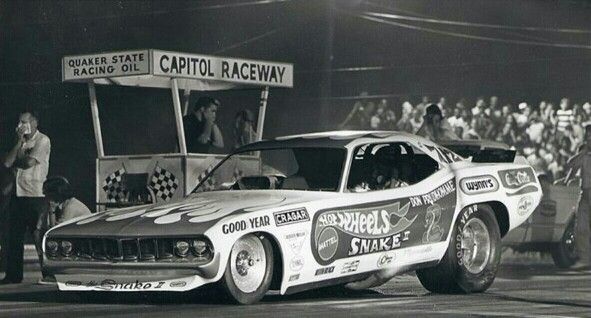
I must confess…I’ve been a car junkie for most of my life. I’ve had the good fortune of earning a living writing about automobiles for most of my life. My passion for automobiles dates back to childhood in the 1960’s when Detroit brought us style, size and sportiness. Automobiles were works of art, not jelly beans with beards automakers seem to be pushing today. They’re just downright ugly. Back in the day, automotive styling made a statement and you could tell the brands apart by their styling. You could see the difference between an Oldsmobile and a Chevy.
Must be frustrating to be an automotive stylist today because aerodynamics and fuel economy have become priority over raw sex appeal. Limits your freedom as a stylist when there used to be so much creative freedom.
My passion for automobiles caught fire when my father handed me an worn out hardware store brand power lawnmower to tinker with when I was 12. It had a 3.0-horse Briggs & Stratton vertical shaft engine and a 20-inch steel deck. He took the blade off to ensure I didn’t wind up losing a foot. My dad had a very modest tool arsenal void of socket wrenches and ratchets, which made it challenging to tear an engine apart. He was very good at reading novels and watching the ball game. Bending wrenches was never his forte.
Tools?
What tools?
I bought 3/8-drive sockets to work on the Briggs. Because I could not afford a ratchet, I used pliers to turn the sockets. Their handles fit into the 3/8-inch square hole perfectly. I got a Husky socket set for Christmas and felt like a real mechanic. I could fix anything! I still have the Husky ratchet to this day, which made it easier to loosen and tighten bolts back in the day. It was dreamy for a young teen to have real hand tools.

I pulled the Champion J-8 spark plug and finned aluminum cylinder head—turned the crank and watched in amazement as the piston and valves took on momentum. The intake valve came off its seat illustrating how fuel and air entered the combustion chamber. I continued turning the crank and watched the piston rise to top-dead-center, which is compression/ignition stroke where power is made with the fuel/air light off. Then—the exhaust valve opened and I got a good look at where spent exhaust gasses went into a door knob-shaped muffler. I was hooked on internal combustion from the get-go. The business of “suck-squeeze-bang-blow” was intriguing to me because I could envision the light off above the piston where the fuel/air mixture ignited and became heat energy, mechanical motion, and power.
This was where I learned something about how power is made.

When it was time to button up that old Briggs and pull the cord, it was exciting to hear it fire and run. That’s when I began to understand the magic of firing an engine for the first time. I still feel that way in a dyno room when we fire an engine for the first time. It is a religious experience.

I went to the drag races in my adolescence and began to take on a passion for speed. I’ve also grown rather fond of circle track, road racing, and autocross, which can really challenge your driving skills. Off-road racing in the dirt and mud never did much for me, however, I admire those with the tenacity who are tough enough to engage in it.
There are those around the world who don’t see much point in the way we race in America. They don’t get chasing one another in a circle (NASCAR), which keeps Europeans laughing at us because those guys enjoy driving like mad men at high speed through small towns and the twisties just to make sure they can do it and remain alive. It is the challenge of racing in some of the toughest conditions imaginable because these European crazies also do it in the rain. That’s real racing. There’s something about getting sideways on wet pavement and surviving that will make a real driver out of you.

I remember taking my 1967 Mustang to Capitol Drag Raceway half-way between Washington and Baltimore in the 1970s. First time I pulled up in the staging lanes, I was advised by track personnel to come back when I had a helmet. Like I really needed one of those? It was a letdown, but it was about safety and obeying NHRA rules.
I came back to Capitol the following weekend and cracked a 15-second quarter-mile pass at roughly 100 mph. Not bad for a worn-out 100,000-mile Ford 289ci V8 engine with Edelbrock intake, Holley carburetor, and badly tweaked (plum tore up…) Mickey Thompson headers with a 3.00:1 axle ratio.

One Saturday night, I was in the staging lanes at Capitol, did my burnout, and staged. Yellow lights came tumbling down the Christmas tree and I got the green. I launched and the darned thing wasn’t near as fast as it was the last time. I’d blown the clutch and barely made it home. I drove home with open headers, which was quite interesting considering it was 11 p.m. on a Saturday night when I arrived home.
Back in the day, I was a bracket racer, which actually meant amateur clutch dumper. I could participate in racing like the professionals. To rev my engine and dump the clutch made me feel like a real stud at age 17. Open headers made my Mustang sound like a real racecar and—to be honest—I felt like a bad ass. I could hear the crowds roar (in my mind) when I left the line.

My point is—mankind loves speed. And, if mankind can get out there, make speed, and feel in control, that’s food for the soul. It feeds our typically fragile egos. People, male and female, love speed—which draws people to racing venues all over the world. Drag racing puts fans right there at the track, which provides excitement and some element of danger. People like that—as long as it’s someone else getting clobbered.
Road and circle track racing are other exciting auto racing pastimes that have long had huge audiences. Back in the day, stockcar and road racing drew thousands. In NASCAR, stock cars were actually STOCK cars built for circle track racing. Enthusiasts could actually relate to the racecars because they were cars enthusiasts drove daily. What won on Sunday sold on Monday, and the automakers knew this. They support racing and were active participants in the sport. Today, stockcar racing isn’t stockcar racing anymore. Chassis, bodies, and engines are boilerplate and it’s no longer run what you brung. It is more about driver skill and identical racecars. Boring, if you ask me. The real thrill of NASCAR for me went away when it stopped being stock cars.

Back in the day, audiences rushed to racetracks around the country. Racing has always been a national pastime—watching racecars at speed. Of course, the Indianapolis 500 remains the Greatest Spectacle in Racing every Memorial Day Weekend. The Daytona 500 down south in Florida has always attracted more of a grassroots crowd. Road racing at places like Riverside, Watkins Glen, Road America, Sebring, Willow Springs, Laguna Seca, and Sears Point have always drawn big crowds. Automakers were more on board in those days because racing success on Sunday meant car sales on Monday.
Cars have always been an integral part of American life, especially in the years following World War II with suburban sprawl and growth in the number of cars each family had. With the demand for individual transportation came a steamy passion for automobiles. As a rule, car buyers always wanted something stylish to be seen in.

When Ford’s sporty affordable Mustang hit the showrooms in April of 1964, it brought forth a whole new persona to the American automobile—the pony car class. Camaro and Firebird followed along with Barracuda, Javelin and AMX. In 1970, the Barracuda caught fire with the ‘Cuda option and a whole lot of power including the 426 Hemi.
Pontiac’s GTO in 1964 was the official launch of the musclecar era—followed by the Olds 4-4-2, Chevelle SS, and even the Buick GS luxury musclecar. Plymouth and Dodge had hot midsize competitors to compete with all the muscle coming from General Motors, Ford, and AMC.
America received one hell of a reality check in the winter of 1973-74 with the Arab Oil Embargo – and later in 1979. I can remember sleeping in my car in line at 4 am at a local Mobil station waiting for the station to open at 7 am to get my five gallons of gas. I had just received my driver’s license and felt very ripped off.
What?
No gas?
All those musclecars everyone wanted in the 1960s no one wanted in the 1970s. Owners dumped them for pennies on the dollar on the market everywhere they could, not understanding what these cars would be worth in the future. As the 1980s unfolded, musclecar prices went through the roof as baby boomers rolled into more disposable income. Like real estate, investors bought up clapped out musclecars, restored and flipped them for whopping sums of money at auction.

Classic musclecars took on incredible value for nostalgic reasons. Baby Boomers wanted to relive their youth via the roar of 425 horsepower and the smell of burning rubber and high-octane gasoline. Today, it is those who grew up in the 1980s and 1990s who want the cars they grew up with back then—cars us old timers said would never be collectible or worth anything. People love nostalgia – and that’s what makes things collectible. We like to amass things that make us feel young.
Times have surely changed since the 1980s and 1990s when it comes to musclecar values. Attitudes are changing and baby boomers are growing older and sliding into poor health. Muscle classics are hitting the auction blocks for less money depending upon the type. Rare limited production musclecars like ZL-1 and Z-28 Camaros, Hemicudas, LS-7 Chevelles, Boss Mustangs, the AMX and the like are still fetching large amounts of cash at auction. Many are being snapped up by buyers overseas and shipped to places like Australia, Europe and Asia. They like hot American musclecars.
More mainstream collector cars are beginning to lose value because so many were produced. Supply and demand have always affected value. They always will. That said, I foresee a glut of classic cars in the marketplace as time marches on. What will happen to them in time is anyone’s guess. The same thing happened to those antique cars our parents grew up with. Ford Model T’s and A’s used to cop big numbers when they were so popular and collectible. As The Greatest Generation began to die off, so did values.
As retiring boomers, we have to keep seeking what keeps us young at heart and eager to bounce out of bed each morning.
That said, my feet hurt…
Where is my Edsel?
LikeLike